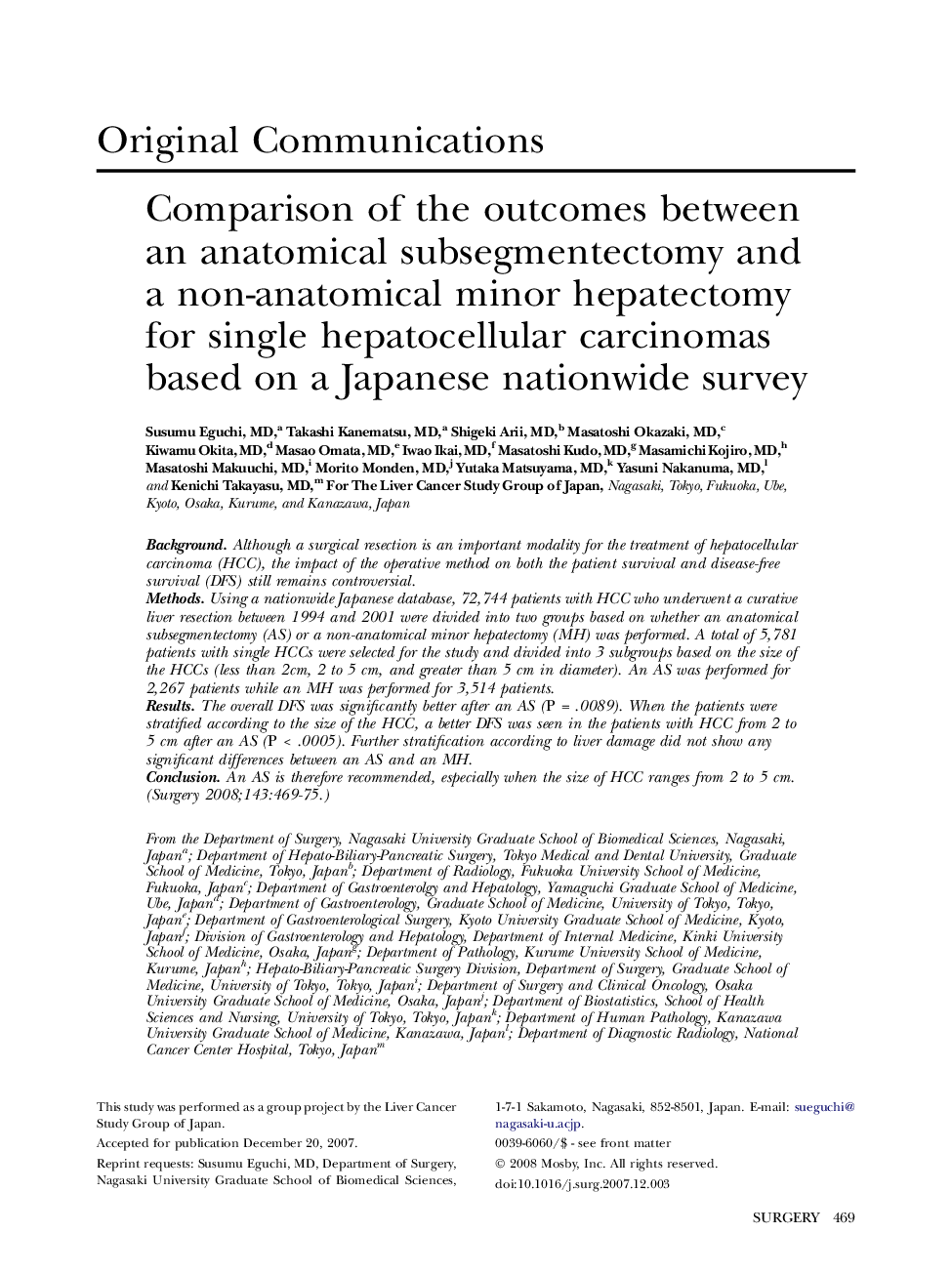| Article ID | Journal | Published Year | Pages | File Type |
|---|---|---|---|---|
| 4309352 | Surgery | 2008 | 7 Pages |
BackgroundAlthough a surgical resection is an important modality for the treatment of hepatocellular carcinoma (HCC), the impact of the operative method on both the patient survival and disease-free survival (DFS) still remains controversial.MethodsUsing a nationwide Japanese database, 72,744 patients with HCC who underwent a curative liver resection between 1994 and 2001 were divided into two groups based on whether an anatomical subsegmentectomy (AS) or a non-anatomical minor hepatectomy (MH) was performed. A total of 5,781 patients with single HCCs were selected for the study and divided into 3 subgroups based on the size of the HCCs (less than 2cm, 2 to 5 cm, and greater than 5 cm in diameter). An AS was performed for 2,267 patients while an MH was performed for 3,514 patients.ResultsThe overall DFS was significantly better after an AS (P = .0089). When the patients were stratified according to the size of the HCC, a better DFS was seen in the patients with HCC from 2 to 5 cm after an AS (P < .0005). Further stratification according to liver damage did not show any significant differences between an AS and an MH.ConclusionAn AS is therefore recommended, especially when the size of HCC ranges from 2 to 5 cm.
